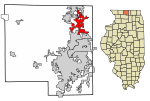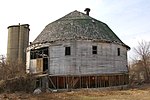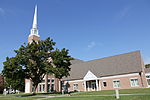Roscoe Township, Winnebago County, Illinois
1849 establishments in IllinoisAC with 0 elementsPopulated places established in 1849Rockford-Freeport-Rochelle geography stubsRockford metropolitan area, Illinois ... and 2 more
Townships in IllinoisTownships in Winnebago County, Illinois

Roscoe Township is located in Winnebago County, Illinois. As of the 2010 census, its population was 19,694 and it contained 7,497 housing units.Roscoe Township was named for William Roscoe, an English historian.
Excerpt from the Wikipedia article Roscoe Township, Winnebago County, Illinois (License: CC BY-SA 3.0, Authors, Images).Roscoe Township, Winnebago County, Illinois
Jane Addams Memorial Tollway, Roscoe Township
Geographical coordinates (GPS) Address Nearby Places Show on map
Geographical coordinates (GPS)
| Latitude | Longitude |
|---|---|
| N 42.449166666667 ° | E -88.993888888889 ° |
Address
Jane Addams Memorial Tollway
Jane Addams Memorial Tollway
61073 Roscoe Township
Illinois, United States
Open on Google Maps






